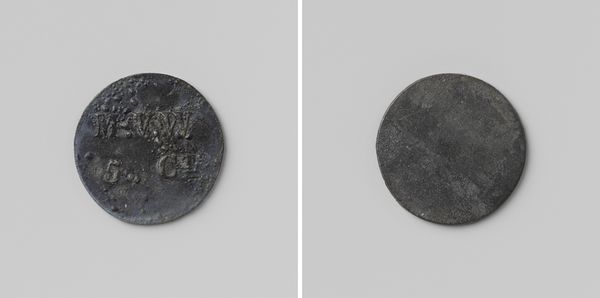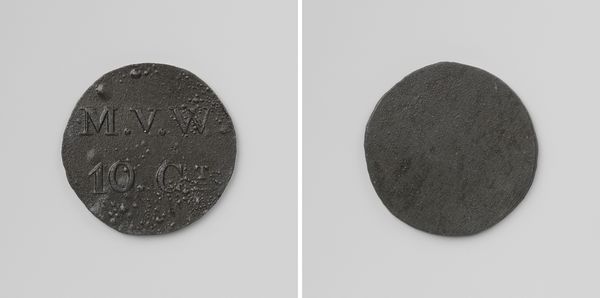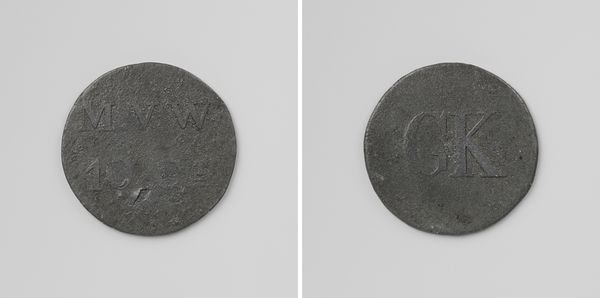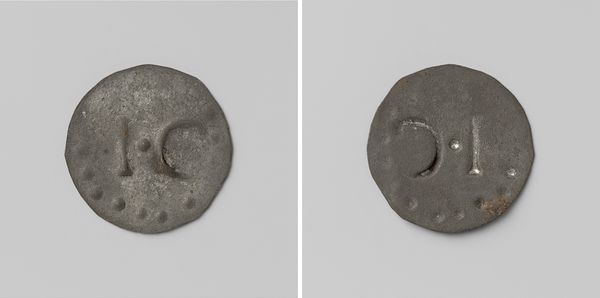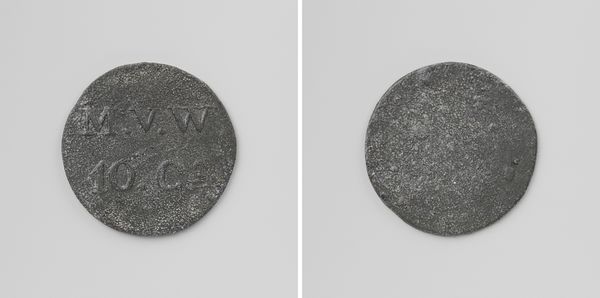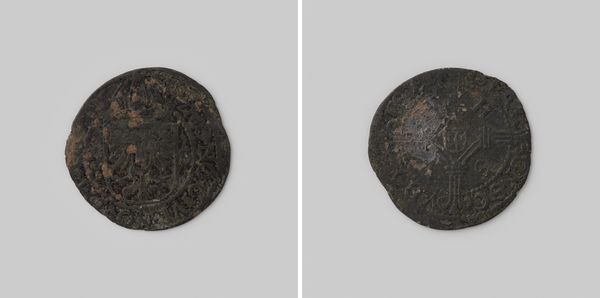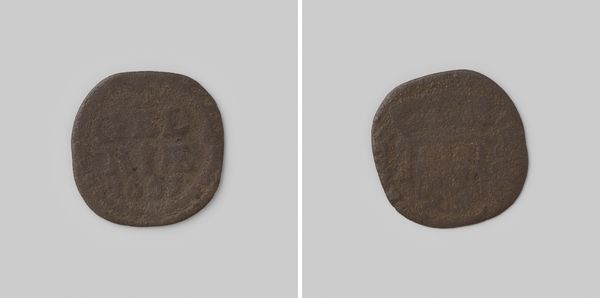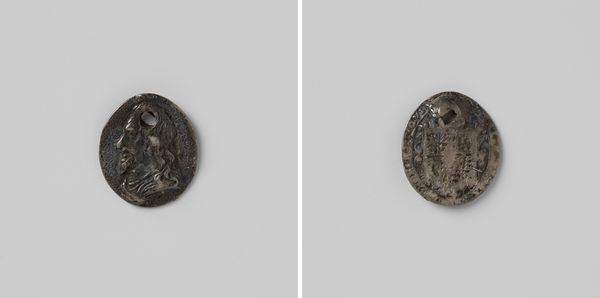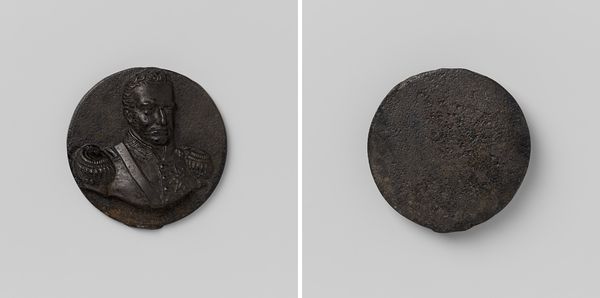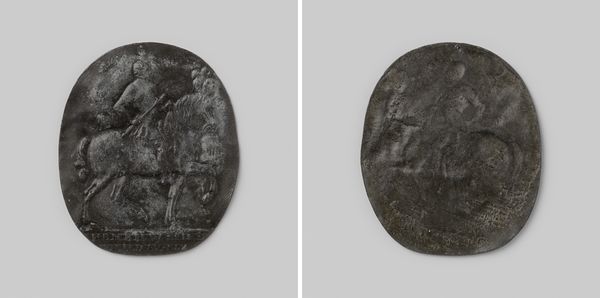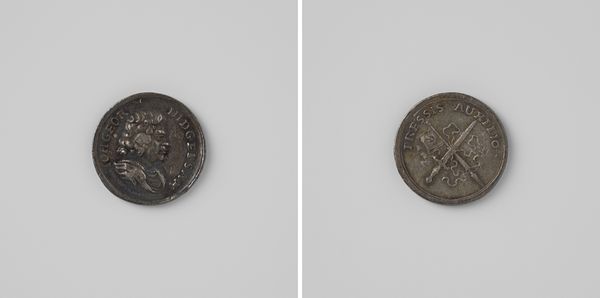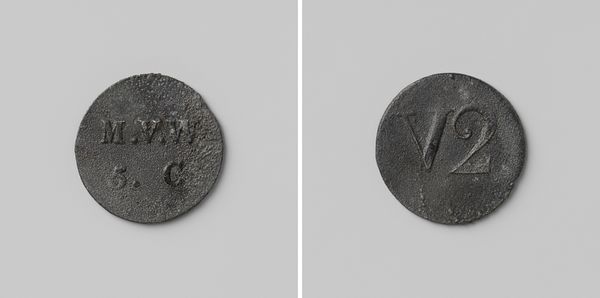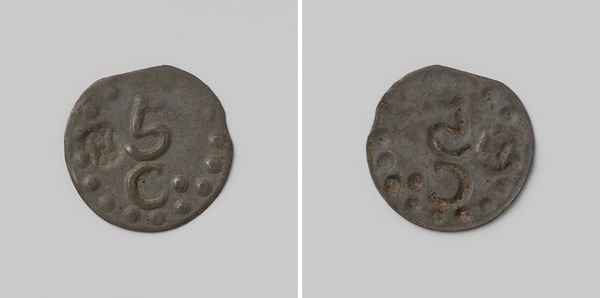
Huismunt geslagen op last van de Maatschappij van Weldadigheid ter waarde van ½ cent, ten behoeve van de Gewone Koloniën 1818 - 1859
0:00
0:00
anonymous
Rijksmuseum
print, metal, relief, bronze
#
dutch-golden-age
# print
#
metal
#
relief
#
appropriation
#
bronze
Dimensions: diameter 1.7 cm, weight 1.59 gr
Copyright: Rijks Museum: Open Domain
Curator: This bronze coin, now held at the Rijksmuseum, is titled "Huismunt geslagen op last van de Maatschappij van Weldadigheid ter waarde van ½ cent, ten behoeve van de Gewone Koloniën." It dates roughly from 1818 to 1859. Editor: It's small, obviously, and quite dark. The raised lettering and symbols on the obverse are interesting, almost crude in their execution. There’s a gritty, palpable materiality to the thing. Curator: Precisely. This "house money" was minted at the behest of the Society of Benevolence for use in their colonies. These were essentially work colonies for the poor, aiming to provide structure and reform through labor. Editor: So, a kind of token economy imposed upon the impoverished? I'm immediately struck by the inherent power dynamic—the Society literally controls the means of exchange, and by extension, the labor. It's not just about the value it represents, but the system it enforces. What about the metal itself? Curator: The choice of bronze speaks to practicality and availability, but it also carries a symbolic weight. It is base metal. These coins are artifacts loaded with meaning about the administration and treatment of the poor at the time. This seemingly simple object lays bare some complex socio-economic engineering. Editor: And look at the reverse – deliberately left blank. Perhaps to discourage counterfeiting, but it feels like an erasure, a negation of individuality. The recipients are denied even the symbolic validation afforded by traditional coinage. There's a very stark message here about labor and worth, cast literally in the bronze itself. The material becomes a testament to power. Curator: Exactly. This isn't just about providing a medium of exchange; it's about controlling every aspect of life within those colonies. From a broader perspective, it raises vital questions about philanthropy and its role in social control. How well-intentioned acts can perpetuate structures of inequality. Editor: Absolutely. It transforms this little coin into a weighty emblem of a deeply unequal system. Something humble in appearance that serves a great way of looking at larger concerns. Curator: A tangible, durable reminder of some of society's uncomfortable truths. Editor: Indeed, a material witness to history.
Comments
No comments
Be the first to comment and join the conversation on the ultimate creative platform.
